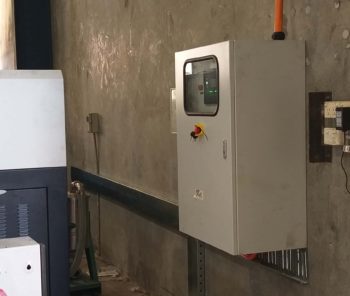A Generator transfer switch or Generator Changeover Switch is an electrical switch that switches a load between two sources. Some transfer switches are manual, in that an operator effects the transfer by manually changing a switch, while others are automatic and trigger when they sense one of the sources has lost or gained power.
An Automatic Transfer Switch (ATS) is often installed where a backup generator is located, so that the generator may provide temporary electrical power if the utility source fails.
Call the Powerlite team now on 1300436 738 to discuss your transfer switch requirements or look at our ready range available off the shelf ready to go.
How does a transfer switch work?
As well as transferring the load to the backup generator, an ATS may also Start the backup generator , based on the voltage monitored on the Mains supply. The transfer switch isolates the backup generator from the Mains Supply when the generator is on and provides a temporary power supply. The control of a transfer switch may be manual only, or a combination of automatic and manual. The transition of a transfer switch can be Open Transition (Break before make), or Closed Transition (Make before break).
For example, in a home equipped with a backup generator and an ATS, when black out occurs, the ATS will signal the backup generator to start. Once the ATS sees that the generator is ready to provide power, the ATS breaks the home’s connection to the mains utility grid and connects the generator to the home’s main electrical panel. The generator supplies power to the home, but is not connected to the Mains utility grid. It is necessary to isolate the generator from the Mains electrical grid to protect the generator from overload in powering loads in the house and for safety, as utility workers expect the lines to be dead not to mention it is against the rules.
When utility supply power returns for a set time time, the transfer switch will transfer the house back to the Mains power grid and tell the generator to turn off, after another determined amount of “cool down” time with no load on the generator.
A transfer switch can be set up to provide power only to essential circuits or to entire electrical (sub) panels. Some transfer switches allow for load shedding or priority demand of optional circuits, such as air conditioning equipment. More complex emergency switchgear used in large backup generator installations permit soft loading, allowing load to be smoothly transferred from the utility grid to the synchronised generators, and back; such installations are useful for reducing peak load demand from a utility but proper authorisation needs to be gained prior.
Call the Powerlite team now on 1300 436 738 to discuss your transfer switch requirements or look at our ready range available off the shelf ready to go.
Types transfer switch
Open transition
An open transition transfer switch is also called a break-before-make transfer switch. A break-before-make transfer switch breaks contact with one source of power before it makes contact with another. It prevents back feeding from an emergency generator back into the Mains utility grid, EG: One example is an open transition automatic transfer switch (ATS). During the split second of the power transfer the flow of electricity is interrupted. Another example is a manual three position switch or circuit breaker, with utility power on one side, the generator on the other, and “off” in the middle, which requires the user to switch through the full disconnect “off” position before making the next connection.
Call the Powerlite team now on 1300 436 738 to discuss your transfer switch requirements or look at our ready range available off the shelf ready to go.
Closed transition
A closed transition transfer switch is also called a make-before-break transfer switch.
A typical emergency system uses open transition, so there is an inherent momentary interruption of power to the load when it is transferred from one available source to another (keeping in mind that the transfer may be occurring for reasons other than a total loss of power). In most cases this outage is inconsequential, particularly if it is less than 1/6 of a second.
There are some loads, however, that are affected by even the slightest loss of power. There are also operational conditions where it may be desirable to transfer loads with no interruption of power when conditions allow. For these applications, closed transition transfer switches can be provided. The switch will operate in a make-before-break mode provided both sources are acceptable and synchronized.
Typical parameters determining synchronisation are:
- Voltage difference less than 5%,
- Frequency difference less than 0.2 Hz
- Maximum phase angle between the sources of 5 electrical degrees.
This means the generator supplying one of the sources generally must be controlled by an electronic governor with a synchronising controller fitted.
It is generally required that the closed transition, or overlap time, be less than 1 second. If either source is not present or not acceptable (when normal power fails) the switch must operate in a break-before-make mode (standard open transition operation) to ensure no back feeding occurs.
With closed transition transfer, the on-site engine generator set is momentarily connected in parallel with the utility grid. This requires getting approval from the local utility supplier.
Call the Powerlite team now on 1300 436 738 to discuss your closed transition transfer switch requirements.
Powerlite have been powering Australia since 1964


